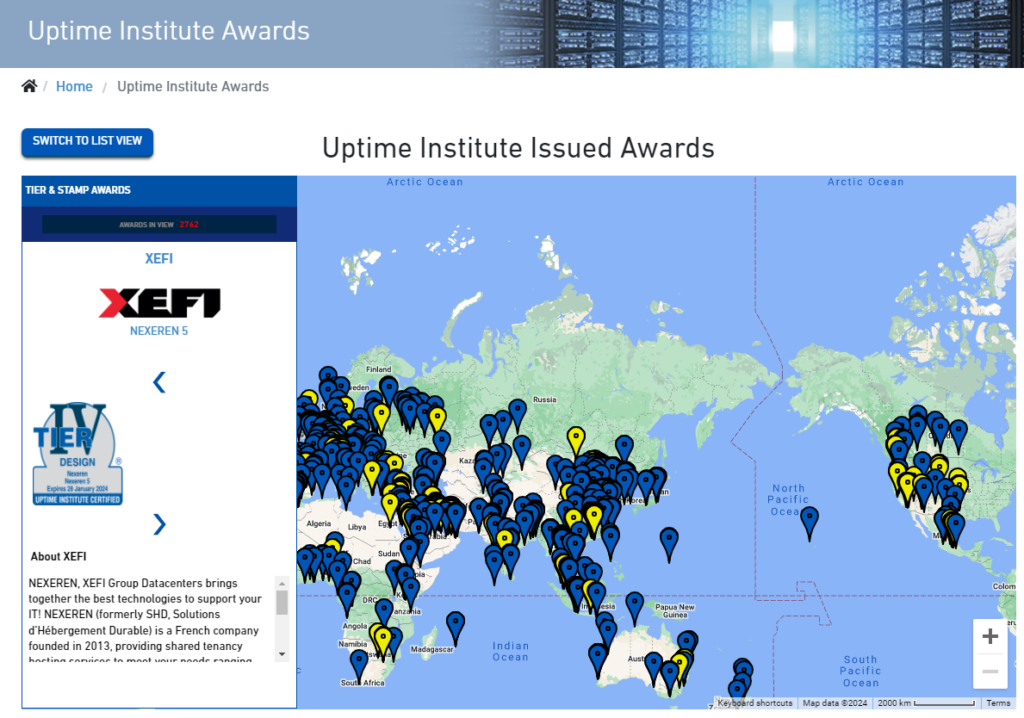Tier 1 to Tier 4: Understanding the Differences in Data Centers
When it comes to data centers, not all are created equal. The industry uses a tier system to classify data centers based on their infrastructure, reliability, and performance. These tiers—ranging from Tier 1 to Tier 4—help businesses understand the level of uptime and redundancy they can expect from their data center provider and can be accredited by an independent certifying body such as Uptime Institute. In this article, we’ll break down the differences between the tiers, so you can make an informed decision about which one is right for your needs.
Tier 1: Basic Infrastructure
Uptime: 99.671%
Annual Downtime: Up to 28.8 hours
Example: A small server room or a small IT provider with a single power source and basic cooling setup.
A Tier 1 data center provides the most basic level of service. It has no redundancy, meaning there are no backup systems in place if something goes wrong. Fire detection and suppression is often limited to basic hand held fire fighting equipment such as extinguishers and hoses. There is no requirement that these facilities staffed. Power protection is often limited to a single UPS and a engine driven generator using a single delivery path.
This tier is typically a good fit for non critical workloads with very limited budgets that can tolerate occasional downtime where the alternative is hosting it yourself or if you need a more solid internet connection. Power outages or equipment failures will lead to service disruptions, and maintenance often requires the entire system to be shut down temporarily.
Tier 2: Redundancy for Critical Components
Uptime: 99.741%
Annual Downtime: Up to 22 hours
Key Difference To Tier 1: Some redundancy in power and cooling
Tier 2 data centers offer more reliability than Tier 1 by providing partial redundancy for critical power and cooling components. This means that some backup systems are in place, so if one component fails, there’s a backup to keep things running, such as a second generator available and extra cooling unit in case one unit fails.
These facilities will have basic automatic fire suppression systems, including water sprinklers or standard gas suppression systems and will usually have a day staff,
Tier 2 centers are suitable for businesses that need better uptime but still don’t require 24/7 availability. Maintenance may still causes downtime, but the risk of unexpected outages is reduced compared to Tier 1.
Tier 3: High Availability and Maintenance Flexibility
Uptime: 99.982%
Annual Downtime: Up to 1.6 hours
Key Difference: Full redundancy, allowing for “concurrent maintainability”
A Tier 3 data center offers much greater reliability with full redundancy across all critical systems and is the standard most organisations will aim for when choosing a data centre. The facilities are designed to allow maintenance and updates without taking the entire data centre offline. This is called “concurrent maintainability.”
Tier 3 is regarded as ‘Full N+1’ meaning every critical system or component within a data center has an additional backup component, such as if a power or cooling component needs repairs, backup systems ensure the data center continues running without interruption. An example of this is if the data-centre requires 2 generators to run the data-centre, the facility will have a 3rd generator sitting spare so one can be taken offline for maintenance or in the event one fails to start.
It is worth noting that many Tier 3 data-centres have upgraded their systems closer to Tier 4 standards however do not meet the technicalities of being certified as Tier 4. This is particularly true for older data-centres.
This tier is ideal for businesses that need consistent uptime and can’t afford frequent outages. It strikes a good balance between cost and availability.
Tier 4: Fault-Tolerant, Maximum Reliability
Uptime: 99.995%
Annual Downtime: Up to 26.3 minutes
Key Difference: Fault-tolerant infrastructure
Tier 4 data centers provide the highest level of reliability, redundancy and security. These facilities are designed from the ground up to be “fault-tolerant,” meaning that even if a major component fails, the system will automatically continue to operate without any downtime. A common practical example of this difference compared to Tier 3 is that Generators need to be physically isolated and self contained from each other in the case one generator fails such as catching fire and damaging the others.
Tier 4 data centres are staffed 24×7 and have the highest levels of fire suppression equipment and environmental monitoring.
Unlike lower data centre tiers, Tier 4 facilities are ‘2N or 2N+1’ meaning that every critical component or system in the data center is duplicated. This means there are two complete, independent sets of infrastructure running in parallel, capable of supporting the entire load. If one set fails, the other can immediately take over without any downtime or performance issues.
Tier 4 is designed for organisations that require near-perfect uptime and professional management, such as financial institutions, governments, telecommunications and companies with critical online operations. This tier comes with a much higher cost due to the extreme costs of building and maintaining the facilities, but ensures the most secure and reliable environment for your equipment
Which Tier Is Right for You?
Choosing the right data center tier depends on your business needs. If occasional downtime isn’t a major concern and you have suitable fail-over plan, a well run local Tier 2 data centre might sufficient. But if your operations depend on high availability, a Tier 3 or Tier 4 data center will offer the level of reliability you need to keep things running smoothly.
Understanding these differences can help you avoid paying for more infrastructure than you need, while ensuring you have the right level of service for your operations.
Finding a Data Centre
One of the easiest ways to find a suitable data centre that meets your requirements is viewing the map on the Uptime Institute Issued Awards page which lists over 2700 data centres all over the world.
